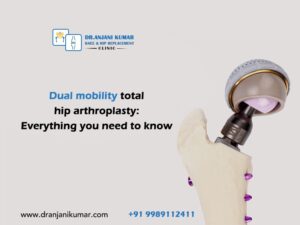An injury to the ligaments supporting the knee joint is known as a sprain. Ligaments connect bones and support joints and are powerful, fibrous structures. The medial collateral ligament (MCL), the lateral collateral ligament (LCL), the posterior cruciate ligament (PCL), and the anterior cruciate ligament (ACL) are the four primary ligaments that can be damaged in the knee (LCL). Suppose any of these ligaments are damaged or strained. Direct trauma to the knee, rapid twisting or hyperextension of the knee, or overuse can all cause this. In terms of severity, knee sprains can range from minor to severe, depending on how much the ligaments have been damaged.
Pain, swelling, stiffness, and trouble supporting your weight on the injured leg are all signs of a knee sprain. The RICE approach, combined with physical therapy exercises to strengthen the muscles around the knee joint, is the standard course of treatment for a knee sprain. Surgery can be required in difficult situations to mend torn ligaments.
Several things can twist or hyperextend the knee suddenly, as well as direct impacts to the knee, which are among the causes of knee sprains.
Causes for knee sprains
Sudden twisting or pivoting: Sports or other physical activities that require quick changes in direction or motions, like basketball or soccer, can cause sudden twisting or pivoting.
Hyperextension: Hyperextension happens when the knee joint is pushed to bend
backwards beyond its normal range of motion, as happens when landing from a jump or halting quickly.

Direct impact: A sprain can result from a direct hit to the knee, such as a fall or collision with another person.
Overuse: Running or leaping over and over can stress the knee joint, which may result in a sprain over time.
Certainly, knee sprains can be uncomfortable. One of the most typical signs of a knee sprain is pain. Depending on the extent of the damage, the pain may be mild, moderate, or severe, but it always gets worse when you move the knee or bear weight on the injured leg. Swelling, stiffness, and trouble bending or straightening the knee may also be signs of a sprained knee.
While some people with more mildly sprained knees may feel minor discomfort, others with more severe sprains may feel rather painful. It’s crucial to consult a doctor if you’ve hurt your knee and have pain or other symptoms, so they can assess the damage and recommend the best course of action.
Who are frequently impacted by knee sprains?
Athletes: Knee sprains are more common in athletes who play sports requiring quick direction changes, jumping, or collision with other players. Basketball, soccer, football, and volleyball players are some examples.
Elderly people: As we age, the muscles and ligaments surrounding the knee joint might deteriorate, leaving older people more prone to knee sprains.

Physically inactive people: Those who are not physically active or have weak muscles and limited flexibility are likelier to sprain their knees.
History of knee injuries: Persons with a history of knee injuries or difficulties are more likely to suffer from knee sprains.
Women: According to research, women may sprain their knees more frequently than males, potentially due to anatomical and hormonal variations.
A knee sprain can happen to anyone, regardless of age or degree of exercise. Knee sprains can be prevented by employing a good technique and preventative measures, such as warming up before exercising.
How to heal a sprained knee quickly?
The degree of the injury determines the course of treatment for a knee sprain. The following are some typical therapies for knee sprains:
Rest: Resting the injured knee is crucial in the initial stages of a knee sprain. Activities that cause pain or swelling should be avoided.
Ice: Putting ice on the injured region can aid with swelling and pain reduction. Many times a day, you can apply an ice pack or cold compress for 20 minutes at a time.
Compression: Putting an elastic bandage across the injured knee might help reduce swelling and offer support.
Elevation: Raising the injured knee above the level of the heart can assist in lessening swelling.
Painkillers: Over-the-counter painkillers can help reduce pain and inflammation.
Physical therapy: Help you regain knee strength and flexibility. Your doctor could advise physical therapy.
Surgery: Only severe knee sprains, such as those involving damaged ligaments or cartilage, may necessitate surgery.
A medical expert should be consulted for a precise diagnosis and treatment strategy for a knee sprain.
Recovery from sprained knee
The time it takes to heal from a knee sprain can change depending on the injury’s seriousness. In contrast, more severe knee sprains might take weeks or months to recover fully, while mild to moderate knee sprains typically heal in around 2 to 4 weeks.
Resting the injured knee and avoiding activities that could worsen its condition is crucial during the initial stage of healing. You might also need crutches or a knee brace to support your knee and lessen pain.
A physical therapist or doctor may advise modest activities like range-of-motion and strengthening as the knee starts to heal. The knee joint’s flexibility, strength, and mobility can be improved using these workouts.
According to the patient and the degree of the injury, the recovery period for a knee sprain might differ. Therefore, seeing a doctor for a precise diagnosis and treatment strategy is crucial.
Dr Anjani Kumar has 20 years of experience and successfully performed 2000 knee replacement surgeries, 350 hip replacement surgeries, and 500 pelvic acetabular surgeries throughout his career.
E-mail: anjanikumar@ gmail.com
Dr Anjani Kumar is an orthopaedic specialist in Kukatpally Hyderabad for ligament injuries, pelvic acetabular fractures treatment, and knee and hip surgeries in Telangana and AP. He is the best Knee Surgeon in Kukatpally Hyderabad, Kadapa and Anantapur. Restore your hip joints and knee function with replacement or revision surgery in Kukatpally, Kadapa and Anantapur.
Contact now 9989112411 Dr Anjani Kumar, the best knee surgeon and hip specialist in Kukatpally, Kadapa and Anantapur. Restore your knee joint function with knee surgery. Get knee fractures treatment and knee replacement surgeries like Total knee replacement (TKR), Partial knee replacement (PKR), Revision knee replacement etc.
Dr Anjani Kumar is the best hip surgeon in Kukatpally, Kadapa and Anantapur. Restore your hip function with revision hip joint replacement surgery. Get hip fractures treatment and hip replacement surgeries like Total hip replacement (THR), Partial hip replacement (PHR), Revision hip replacement etc.
Dr Anjani Kumar is serving all patients in & near the Kukatpally Hyderabad, Kadapa and Anantapur cities in Andhra Pradesh.




